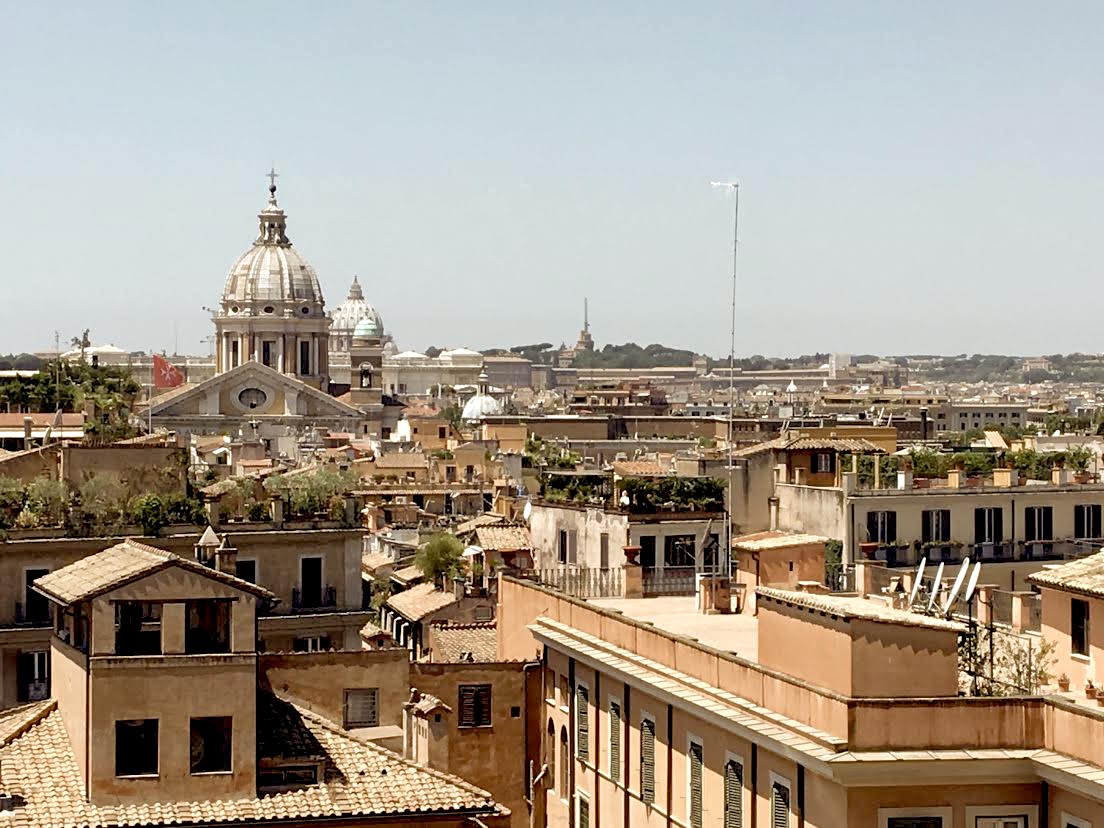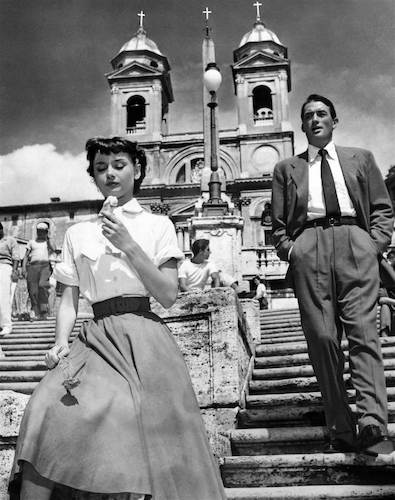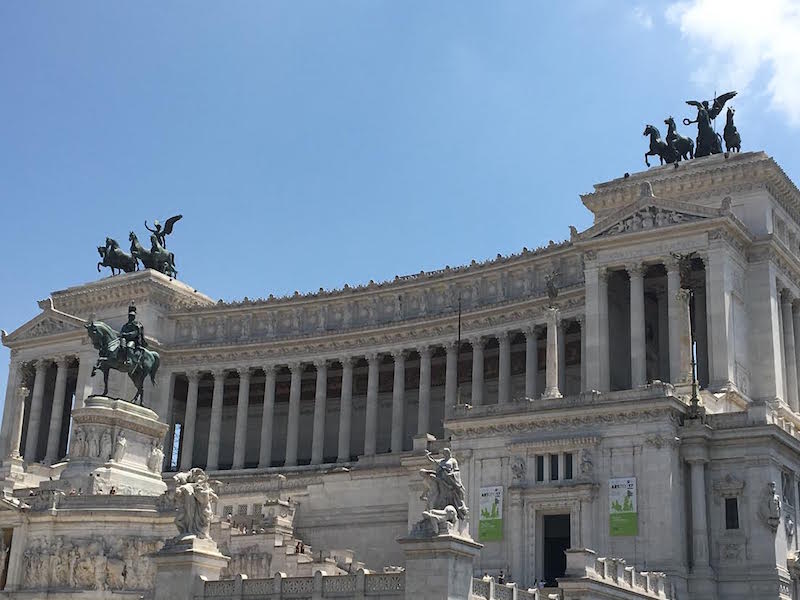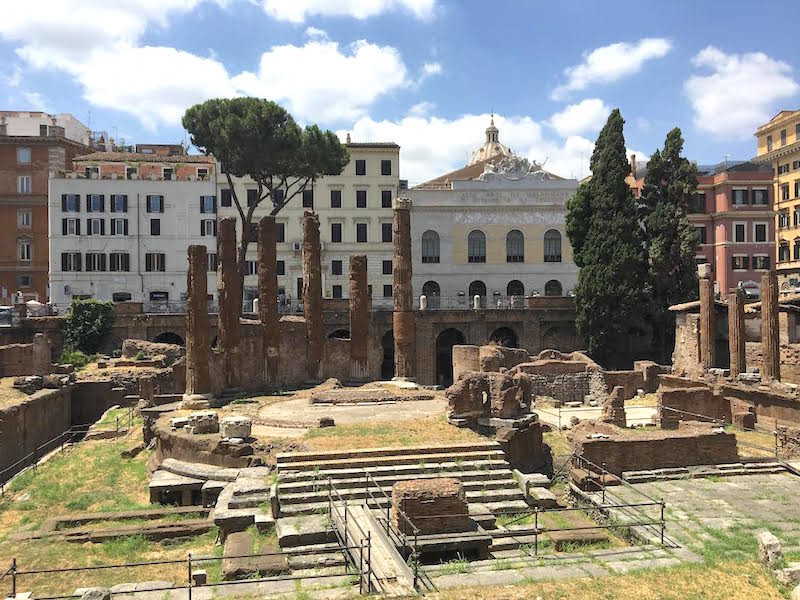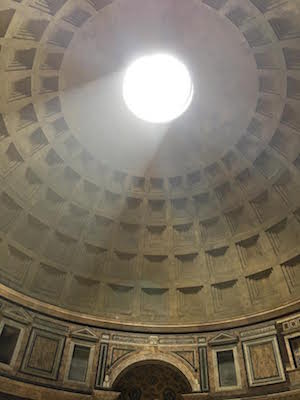My younger daughter and I are currently traveling in Europe and decided to spend a day in Rome because, well, it’s Rome. Not only is it known as the cradle of civilization, but, as you may recall from my post from Croatia, we are set-jetters.
As the mother of two daughters, I watched “The Lizzie McGuire Movie” on repeat in 2003 and 2004 and 2005 and…
I also love “Roman Holiday” with Audrey Hepburn and Gregory Peck, “The Talented Mr. Ripley” featuring a young Matt Damon, and “Eat, Pray, Love” starring Julia Roberts.
And then there’s “Ocean’s Twelve,” “The Pink Panther 2,” “Mission: Impossible III,” and “When in Rome,” along with a slew of other movies that were filmed against the magnificent background of Rome’s places of worship, monuments, statues, and historical buildings.
As we are not only set-jetters, but “frugal Hoosiers” as Frankie Heck in “The Middle” would say, we challenged ourselves to see seven major movie-related tourist sites in Rome in one day for zero dollars.
We started our tour of Rome at the main train station, Roma Termini, where scenes from “Ocean’s Twelve” were shot, then walked about 2 kilometers to the Spanish Steps, a set of 135 steps that leads from the Piazza di Spagna up to Trinità dei Monti.
The Spanish Steps, or the Scalinata di Trinità dei Monti, have starring roles in “Roman Holiday,” “The Talented Mr. Ripley,” and the movie version of “The Man From U.N.C.L.E.”
Lizzie McGuire, as Isabella, signs autographs for admiring fans on the stone staircase. The steps also make appearances in an episode of “Everybody Loves Raymond” and songs by Bob Dylan and Toto. Their popularity and architectural aesthetic make them a prime selfie spot for the hordes of tourists that make the climb from the base to Trinità dei Monti.
Not only are the Spanish Steps a free attraction, but Trinità dei Monti charges no admission and contains, as one would expect, priceless (see what I did there?) paintings, sculptures, and frescos depicting scenes from the Bible and the religious history of Rome.
Just outside the main entrance to the church is one of Rome’s thirteen obelisks, the Obelisco Sallustiano, and a spectacular view of the city.
Heading back down the steps (carefully — they have been worn smooth by centuries of foot traffic), you enter Via Condotti, Rome’s poshest shopping area filled with high-end Italian brands like Gucci, Prada, Hermès, Louis Vuitton, Jimmy Choo, and Dolce & Gabbana.
Luckily, window-shopping is also free.
A short walk from the Piazza di Spagna is the Trevi Fountain, one of Rome’s most popular sights. With a facade built from travertine stone, this imposing fountain sits at the intersection of Via De’ Crocicchi, Via Poli and Via Delle Muratte (hence the name, Trevi, or tre vie — three streets) and the terminal point of an aqueduct that supplied water to ancient Rome.
Now it is a major tourist spot where visitors gather to take photos of the water-themed sculptures and toss a coin into the fountain.
This tradition was popularized in the movie “Three Coins in the Fountain,” but the iconic representation of this tradition for female millennials is the moment when Lizzie McGuire chucks a coin into the fountain over her left shoulder and Paolo appears.
She returns to the fountain the next day and jumps on the back of his Vespa for a day of adventure in Rome.
If you really want to be picky, I suppose you could say we did spend money while we were in the city as we couldn’t pass up the chance to take part in this tradition.
The approximately $1.6 million in coins that were tossed into the fountain in 2016 were collected by city workers and donated to Caritas, an action-based Catholic charity that provides assistance to people all over the world.
Another short walk took us to the Altare della Patria. It can be seen briefly in the background of many movie scenes, but is not at all popular with the Romans, who disparagingly refer to it as “La Torta Nuziale” (The Wedding Cake) for its shape and ostentatiousness.
It was described in the Architectural Review as “chopped with terrible brutality into the immensely complicated fabric of the hill” as a portion of Capitoline Hill, one of the Seven Hills of Rome, was demolished for its construction.
Whether you love it or hate it, it is free to visit the military history museum and Italy’s Tomb of the Unknown Soldier, though it will cost you €7 to take the elevator to the top of the building to see a panoramic view of the city if you wish.
The Curia of Pompey was the next stop on our self-guided walking tour through Rome. Though it wasn’t featured in any modern movies (that I know of), the complex housed a theater that was dedicated in 52 BC. It was in this theater that Julius Caesar was murdered by Roman Senators.
Regardless of the fact that the Curia doesn’t have any apparent movie tie-ins, my mother-of-Millennials brain couldn’t help but think of Gretchen Wiener’s monologue in “Mean Girls”:
Why should Caesar just get to stomp around like a giant while the rest of us try not to get smushed under his big feet? Brutus is just as cute as Caesar, right? Brutus is just as smart as Caesar, people totally like Brutus just as much as they like Caesar, and when did it become okay for one person to be the boss of everybody because that’s not what Rome is about! We should totally just stab Caesar!
Our next stop, the Pantheon, has a featured role in the movie “Angels and Demons.” Professor Robert Langdon, and his new wife, Vittoria, visit the Pantheon in pursuit of an assassin, mistaking it for the First Altar of Science.
Using their deductive reasoning, they believe the Pantheon is the Altar because the first line of the poem that they find in the Vatican Secret Archives reads, “From Santi’s earthly tomb with demon’s hole.”
Standing in the center of the Pantheon, it is easy to see why they thought they were in the right place. If you look straight up to the center of the rotunda, you will see the oculus (the “demon’s hole?”) a classical architectural feature used to control the temperature and let light inside the windowless building.
The Pantheon is open to the public and a steady flow of tourists stream in and out of the building. As with other churches in Rome, no admission is charged, but donations are always welcome.
Our next-to-last stop was Piazza Navona, an open plaza that houses street performers and artists, restaurants, shops, and souvenir vendors. This wide open space makes it a perfect location for filming and it has been used in many popular movies including “Eat, Pray, Love.”
Julia Roberts can be seen strolling around the Fontana dei Quattro Fiumi (Fountain of the Four Rivers) in the center of the square and eating gelato on a bench near the Sant‘Agnese in Agone church.
In Angels and Demons, a cardinal (the religious kind, not the bird) is drowned in the same fountain.
Woody Allen’s “To Rome With Love” also makes use of the piazza, as does “National Lampoon’s European Vacation.” The café where Freddie Miles turns up in “The Talented Mr. Ripley” is also in the piazza near the fountain.
I could go on and on, but you get the picture.
To give you some idea of the size of the piazza and why it makes a great filming location, you only need know that it was built over a competition arena that was surrounded by seating for 15,000-20,000 spectators.
On our way to our final destination, Vatican City, we walked through Campo De’ Fiori, were public executions were once held and now vendors sell fruit, vegetables, cheese, meat, flowers, and plants to tourists and residents alike.
On our way to the Roma San Pietro train station, we had a few minutes to stop by the Vatican. As it is technically a separate country within Rome and not many movies have actually been filmed here, I didn’t include it on my list of sites to see while set-jetting in Rome, but this tiny city-state or its likeness have been included in many movies, sometimes to its dismay and often despite its disapproval.
So, there you have it. Seven filming locations. One day. Zero dollars. Set-jetting in Rome at its rock-bottom best!
Set-jetter Tips:
- If you arrive at Roma Termini and need a place to stash your luggage while you explore the city, the station has a storage room managed by a third party company that costs €6 for the first five hours and is open from 6 a.m. to 11 p.m. If there’s a long line, there’s also a small left luggage facility across the street from the terminal’s main entrance.
- Rome has public fountains around every corner where you can splash some cold water on your face, wash the gelato off your sticky fingers, or refill your water bottle.


